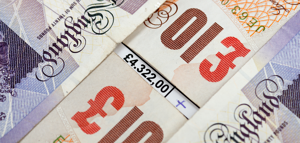Tavex uses cookies to ensure website functionality and improve your user experience. Collecting data from cookies helps us provide the best experience for you, keeps your account secure and allows us to personalise advert content. You can find out more in our cookie policy.
Please select what cookies you allow us to use
Cookies are small files of letters and digits downloaded and saved on your computer or another device (for instance, a mobile phone, a tablet) and saved in your browser while you visit a website. They can be used to track the pages you visit on the website, save the information you enter or remember your preferences such as language settings as long as you’re browsing the website.
| Cookie name | Cookie description | Cookie duration |
|---|---|---|
| tavex_cookie_consent | Stores cookie consent options selected | 60 weeks |
| tavex_customer | Tavex customer ID | 30 days |
| wp-wpml_current_language | Stores selected language | 1 day |
| AWSALB | AWS ALB sticky session cookie | 6 days |
| AWSALBCORS | AWS ALB sticky session cookie | 6 days |
| NO_CACHE | Used to disable page caching | 1 day |
| PHPSESSID | Identifier for PHP session | Session |
| latest_news | Helps to keep notifications relevant by storing the latest news shown | 29 days |
| latest_news_flash | Helps to keep notifications relevant by storing the latest news shown | 29 days |
| tavex_recently_viewed_products | List of recently viewed products | 1 day |
| tavex_compare_amount | Number of items in product comparison view | 1 day |
| Cookie name | Cookie description | Cookie duration |
|---|---|---|
| chart-widget-tab-*-*-* | Remembers last chart options (i.e currency, time period, etc) | 29 days |
| archive_layout | Stores selected product layout on category pages | 1 day |
| Cookie name | Cookie description | Cookie duration |
|---|---|---|
| cartstack.com-* | Used for tracking abandoned shopping carts | 1 year |
| _omappvp | Used by OptinMonster for determining new vs. returning visitors. Expires in 11 years | 11 years |
| _omappvs | Used by OptinMonster for determining when a new visitor becomes a returning visitor | Session |
| om* | Used by OptinMonster to track interactions with campaigns | Persistent |
| Cookie name | Cookie description | Cookie duration |
|---|---|---|
| _ga | Used to distinguish users | 2 years |
| _gid | Used to distinguish users | 24 hours |
| _ga_* | Used to persist session state | 2 years |
| _gac_* | Contains campaign related information | 90 days |
| _gat_gtag_* | Used to throttle request rate | 1 minute |
| _fbc | Facebook advertisement cookie | 2 years |
| _fbp | Facebook cookie for distinguishing unique users | 2 years |
UK Interest Rate Historic Overview

The current Bank of England base rate of interest is 5.25%. Interest rates have always been a cornerstone of the UK’s financial and economic policies, reflecting and influencing the country’s economic health. This article delves into the historical journey of interest rates in the UK, highlighting how they have evolved in response to economic challenges, policy changes, and global events.
Background of Interest Rates

Interest rates in the UK are influenced by a variety of factors, including inflation, economic growth indicators, political events, and global economic trends.
The Bank of England, through its Monetary Policy Committee, is responsible for setting the base interest rate. This committee considers various economic indicators and forecasts to make informed decisions aimed at ensuring economic stability.
Interest rates have a profound impact on the economy, influencing borrowing costs, consumer spending, and overall economic growth. They are a vital tool for managing inflation and stimulating or cooling economic activity as needed.
What is the Current Base Rate in the UK?
The current Bank of England base rate of interest is 5.25%
The base rate is the rate the Bank of England (or Federal Reserve in the US) charges other banks and lenders when they borrow money
Over the past year, there has been a notable rise in the base rate. In March 2020, the base rate fell to a record low of 0.1% in order to support the economy amid the coronavirus’s effects. It stayed there until November 2021.
After this time, the base rate started to gradually increase. It reached 0.75% by March 2022, 2.25% by September, 3% in November 2022, and 3.5% by the end of the year, which was the highest rate in more than ten years. The Monetary Policy Committee (MPC), which sets interest rates, did not meet in January 2023, but they nevertheless increased rates by 0.5 percentage points in February 2023, to 4%. In addition, the base rate increased by 0.25 percentage points to 4.25% in March.
Moreover, the base rate was 4.5% on Thursday, May 11, 2023, following an additional 0.25 percentage point increase. The base rate was 5% as of Thursday, May 22, 2023, following an additional 0.5 percentage point increase. Interest rates continued after that. The base rate was increased by 0.25 percentage points to 5.25% on August 3rd, 2023, which is the highest rate since February 2008, during the UK financial crisis.
September 21, 2023 saw no changes to the base rate, which stayed at 5.25%. Since December 2021, interest rates have not increased at fifteen monetary policy meetings. This was the first time this has happened.
Historical Context of UK Interest Rates
UK interest rates began in the times before centralised banking, where rates were largely influenced by the gold standard and fluctuated based on the supply and demand of gold. During this era, interest rates were a direct reflection of the country’s economic stability.
After World War II, the UK faced significant economic restructuring. The Bank of England adopted new policies to manage inflation and stimulate growth, leading to fluctuating interest rates that mirrored the nation’s recovery efforts.
The 1970s presented a unique challenge with skyrocketing inflation rates, prompting the Bank of England to raise interest rates dramatically. This period is marked by some of the highest interest rates in UK history, with significant implications for the economy.
Read more about interest rates in the United States here: The Federal Reserve
Major UK Inflation Events in the Last 50 Years

- The Thatcher Administration
- Black Wednesday
- 2008 Financial Crisis
- Brexit
- Covid-19
1) The Thatcher Administration
1979 saw a shift towards high interest rates under Prime Minister Margaret Thatcher, aimed at controlling inflation through tight monetary policy. Margaret Thatchers administration raised interest rates to 17% to combat inflation, which had been steadily rising. While this reduced inflation, some argued that it had a negative impact on UK manufacturing exports. Then, towards the end of the 1980s, interest rates started to rise once more, in part because home prices were rising.
2) Black Wednesday
A period of relative stability in interest rates followed, characterised by moderate fluctuations and a focus on balancing inflation with growth. However, a further significant development in the history of interest rates occurred in 1992 when the UK withdrew from the European Exchange Rate Mechanism, also referred to as “Black Wednesday.” The basic interest rate of the Bank of England was raised from 10% to 12%, and Prime Minister John Major later pledged to raise the rate even higher to 15%. Eventually, though, the government returned interest rates to 10%.
3) 2008 Financial Crisis
The 2008 financial crisis was a turning point, leading to historically low interest rates as part of global efforts to stimulate economic recovery. The Bank of England cut rates from 5% to 0.5% in nine months at the end of 2008, causing the largest and most abrupt decline. The aftermath saw the Bank of England navigating new economic challenges.
The base rate reached its lowest point in 300 years
Interest rates continuously stayed below 6%. In July 2007, it was at 5.75%; by March 2009, it had dropped significantly to just 0.5%. All homebuyers gained when the rate dropped to 0.25% in August of 2016. By November 2017, the interest rate had somewhat returned to 0.5%, and by August 2018, it had once more reached 0.75%.
4) Brexit
In recent years, Brexit and other global economic uncertainties have influenced interest rate policies, with the Bank of England adjusting rates to manage economic indicators and stability.
5) Covid-19

In response to the coronavirus epidemic in 2020, the Bank of England lowered the base rate to a record low of 0.10% with the goal of offering lower borrowing rates to impacted people and businesses. The interest rates throughout the 325-year history of the Bank of England were at their lowest point, a historic low of 0.10%.
This action aimed to lower borrowing rates, boost economic activity, and give financial relief to firms and households affected by the pandemic. Interest rates and mortgage payments were at historically low levels for new homebuyers who took out fixed-rate mortgages, offering a substantial financial advantage.
Post Pandemic
To promote economic growth and rein in inflation, the Bank of England began to hike interest rates as the UK economy gradually recovers from the effects of the pandemic. To rein in inflation and boost the economy, the Monetary Policy Committee decided in November 2022 to raise the base rate by 0.75%, the largest increase in borrowing costs since 1989.
Impact of Inflation on Interest Rates

Inflation is a key factor that significantly influences the direction of interest rates
As prices of goods and services rise, the purchasing power of money declines. The Bank of England monitors inflation closely, as controlling it is central to economic policy.
When inflation is high, the bank may raise interest rates to cool down economic activity by making borrowing more expensive, which in turn reduces spending and slows inflation. Conversely, in periods of low inflation or deflation, the bank might lower interest rates to encourage borrowing and spending, thereby stimulating economic growth.
Future Outlook on UK Interest Rates
Understanding the relationship between inflation and interest rates is crucial for predicting future economic trends and for policymakers to balance economic growth with price stability.
Predicting the future trajectory of UK interest rates involves considering current economic conditions, potential global influences, and domestic challenges. With ongoing uncertainties such as Brexit, the direction of interest rates remains a subject of keen interest and speculation.
Gold as a Hedge Against Inflation
Throughout history, gold has been viewed as a stable store of value, especially during times of high inflation. When fiat currencies lose value due to rising prices, gold often retains its worth, making it an attractive investment for those looking to preserve their purchasing power.
In the UK, as in many countries, investors and savers have turned to gold during periods of high inflation or economic uncertainty. This flight to gold can influence the broader economy, impacting currency values and potentially leading to changes in monetary policy.
The relationship between gold and inflation highlights the complex interplay between different types of assets and economic indicators. As an asset unaffected by government policy or interest rate changes, gold remains a critical component of the discussion on managing economic stability and inflation.


















